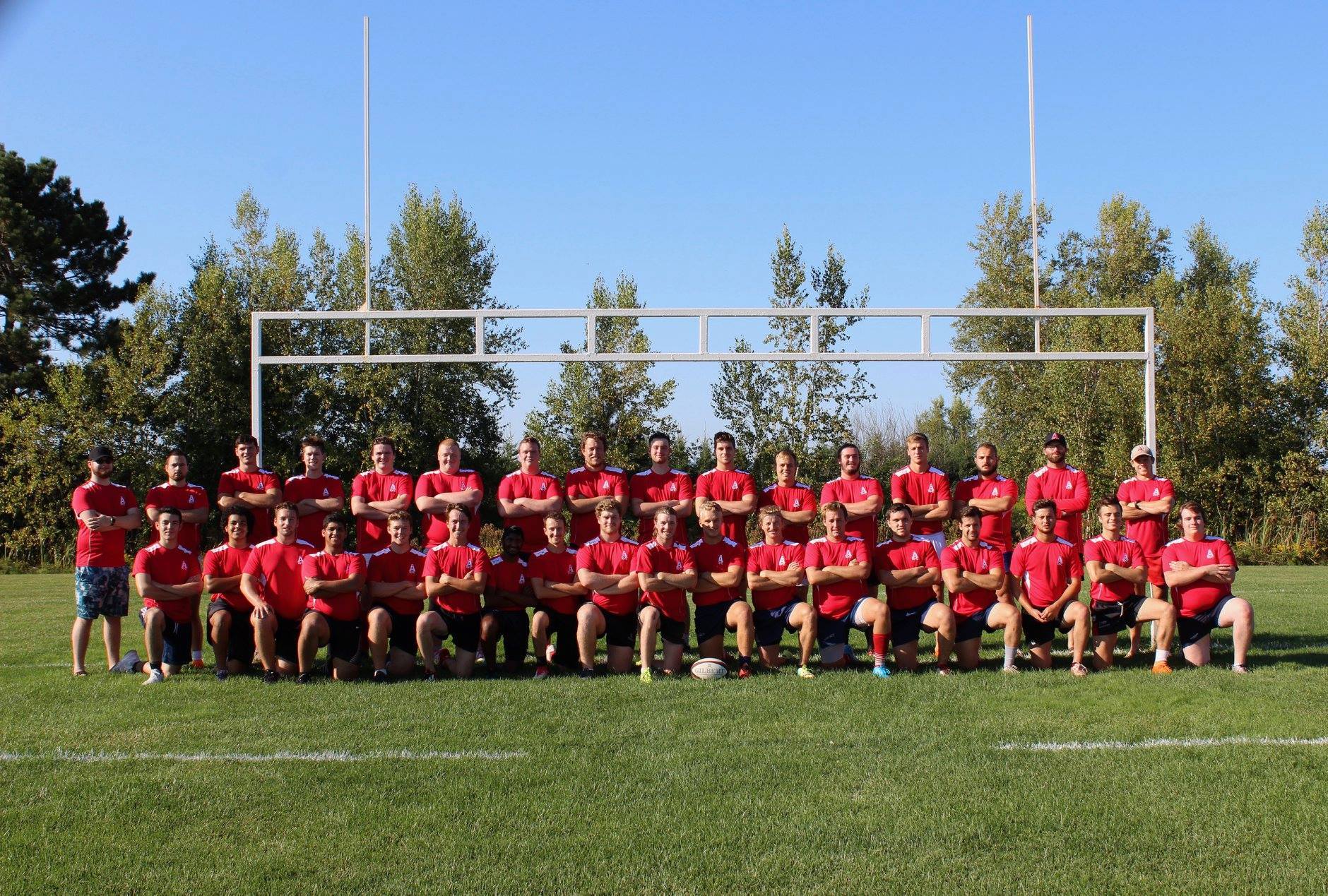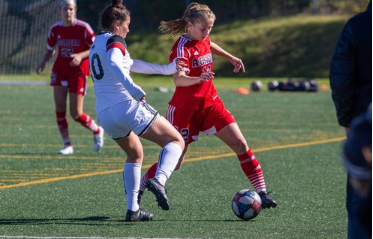When I look at an athlete, all I see is an individual who strives for greatness. Someone who pushes their body to perform exceptional tasks, and ultimately accomplishes a triumphant goal. As a young kid, I assumed that was generally the same perspective everyone had. Over time and through various experiences, it was hard to accept that not all athletes are treated the same way. It was difficult to process that gender is the divide that dictates societal perceptions of athletic greatness.
As a fifth-year varsity volleyball player at Acadia, I had the opportunity to write a thesis. I decided very early on that I wanted to write a thesis on gender inequality in sport at Acadia. My first interaction with gender bias in sport came when I was in the fourth grade, when I was directly excluded from playing soccer with my friends at recess because some little boy walked up to me and said, “because you are a girl.”
After learning about this athletic bias from academics, the media, or even from first hand experiences, I knew this was an area I wanted to expose. As Acadia was a huge part of my life, I knew that if there were issues of inequality present, I wanted to unveil them and raise awareness for all athletes at the school. My ultimate goal was to present an opportunity for Acadia Athletics to represent something more than championship level teams: equality and respect.
For my thesis, I wanted to look into the history of sport and recognize where issues of inequality grew. I found that throughout history, men and women were fundamentally differentiated based on their sex, that through scientific classifications, men and women were inherently different. This created the illusion that men were more physically capable than women of accomplishing tasks, and any woman with a dominant personality or superior skill was cast aside. Even being a woman with an interest in sport shook the very foundation of societally expected femininity, ultimately leading to the impression of overall inferiority. Although these views represent a very old frame of thought, the underlying bias has translated into current day platforms that impact people’s interpretations of athleticism. This can be seen in the media when female tennis players are asked to twirl and show off their uniform, compared to male hockey players who are asked about their pre-game routine. This can also be seen in the comparison of the financial compensation female athletes earn, compared to their professional male counterparts.
Gender bias in sport is a known issue. What I wanted to discover is whether or not this unfortunate bias has been established within the foundation of Acadia Athletics. In my study, I conducted interviews with female athletes, as well as administrative staff members. To gain a larger understanding of Acadia Athletics as a whole, I sent a survey out to all athletes, with 73 total participants. Fortunately, I had one athletic representative from each varsity team partake in the survey. I eventually concluded that Acadia Athletics had succumbed to the greater gender bias in sport in relation to double standards, financial support, and media coverage.
The gender bias and double standards were displayed mostly in the treatment and privileges given to male athletes over female athletes. Many female participants emphasized their frustration with feeling of lesser value compared to their male counterparts, whether it was through having less than optimal field times, having fewer Acadia bus travel benefits, or having less respect regarding their team’s overall equipment management. The majority of female participants in the survey felt this was a significant issue, while the majority of male participants didn’t note this as an issue.
Media coverage was another significant factor supporting the notion of athletic gender bias at Acadia. Many female athletes reflected on past experiences where their team had seen little or even zero recognition on the school’s social media platforms. Even in the visual representation of online promotion, some female teams noted not feeling the same support that other male teams received based on how they were promoted.
Finally, financial support was also an issue recognized in this study. Although there are certain systems in place aimed at helping raise funds for women in sport, many female athletes recognized the additional work they had to put in to raise money for their own sports team, unlike the male teams, whether this was in relation to funds for new equipment, locker rooms, or money for travel.
Ultimately, the presence of gender inequality was found within Acadia Varsity Athletics. However, my study did show signs of growth towards equitable treatment with athletes. For example, in the weight room, everyone is pushed to become their best athletic self regardless of societal standards of masculinity or femininity. Financially, our administrative team is working to make the athletic scholarship range equal for male and female athletes. As well, there is an event every two years at Acadia called “Women in Sport,” which aims to raise awareness for female representation and equality in sport.
Acadia is an institution that strives for greatness and has the potential to be at the forefront of innovation towards gender equality in sport. Although there are certain issues of gender inequality within Acadia Athletics, I am a firm believer that with foundational changes, more can be accomplished towards propelling gender equality in sport forward. I believe taking larger strides towards gender equality in sport can have a lasting impact so that future generations of girls can successfully play any sport without having anything standing in their way.
Sarah Ross ’18 is a former member of the Acadia Women’s Volleyball team






I like to swim in the pool lol
Gender inequality is alive in every facet and level of sport. Good to hear students recognizing that. We need the world to learn that. International Rugby funds Rugby Canada solely on how our mens program does. Yet it is our womens team out there making a name for rugby in Canada. The women only just started having expenses paid at the last World cup and earning 1/10 the money the men make. And right up to U20 Women pay to play to represent their country. This year alone every rugby player across Canada paid an extra $20.00 to fund the mens program, so that all their players can train together year round in B.C. Yet our women only get together to train when a major match or tournament is coming up. So I as a mother of 3 daughters, 2 of which played sports am happy to see this issue brought to light, because talking about it is the first step to making change.
As a former Equity Officer for Acadia University, I can point you to a report that compels the administration to take active steps towards gender equity in their varsity sports program. It resulted in some very significant changes in the late 90’s-2000’s but there is still work to be done as you have pointed out in your article (and thesis). It would be an interesting read for you and it should be available through the President’s Office.
It is a frustrating journey as a female athlete and it does provide student-athletes with an advantage both developmentally, socially, and in their future careers so it is a privilege that should be equally available to any student.
Nothing changes without a spotlight on an issue…and a lot of courage. Unfortunately, change at Acadia seems to be happening at a snails pace.
I was the Head Coach of the Acadia Women’s Volleyball team from 1993-96. I spent the first two years fighting to have volleyball court lines painted to align with the bleachers. The Men’s Basketball coach thought it would look messy to have more lines on the floor so we had to play our matches without the spectators able to watch the game properly. It sounds ridiculous but it was a huge victory to get those lines!There is a list of things I was able to get (practice clothes, recruiting budget, travel budget, some practice time on the game court) but it took a huge effort to get a small portion of what the men’s teams were provided. It’s disappointing to hear that the disparity still exists 22 years later.
It is unhealthy for both the women and men attending Acadia to start their adult lives with the impression that men are more important than women.